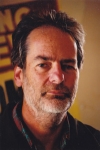Bernard Whimpress
Bernard Whimpress is a writer, historian, and former curator of the Adelaide Oval Museum. A member of the Australian Society for Sports History, Bernard has written twenty books mainly on sport, including The Official MCC Ashes Treasures, Passport to Nowhere: Aborigines in Australian Cricket 1850–1939, The Greatest Ashes Battles and as co-author The History of Australian Cricket. He published and edited the Australian cricket journal Baggy Green from 1998 to 2010.
Fifty years ago, Brian Scheer, a tall, sinewy Imperials fast bowler, thrilled a handful of boys by driving bowlers of all descriptions straight over their heads, depositing their deliveries in clumps of thick weeds on a low hill at the northern end of the Murray Bridge High School No. 2 Oval. Imps practised on Thursday evenings, and Scheer was the regular opening bowler in B grade, with just the o ... (read more)
Second ball, day three of the 2014 Boxing Day Test match and Australian wicket-keeper Brad Haddin dives full length in front of first slip Shane Watson to catch Indian number three batsman Cheteshwar Pujara off Ryan Harris single-handed in the webbing of his glove. Virat Kohli replaces Pujara, and in the last over of the day he is still there, with 169 runs. He flashes and gets a thick edge to a b ... (read more)
Enterprise and energy are integral to this story. Without the enterprise of James Lillywhite and John Conway there would have been no Australian tour to England in 1878. Nottingham professional Lillywhite, who captained England in the first-ever Test matches at Melbourne in March-April 1877, arranged the English fixture list and former Victorian all-rounder Conway chose a twelve man touring party, ... (read more)
Emeritus Professor Bob Reece has published widely on Aboriginal history and on New Norcia history in particular. In a brief preface he notes that his paternal grandfather and father were fine cricketers and that he (a poor player) has followed the game from the time of Don Bradman’s Invincibles in the late 1940s. When he learned of the Benedictine Mission’s Aboriginal cricketers who played bet ... (read more)
The Commonwealth Games, like the Commonwealth of Nations, often seem irrelevant. I intended to declare my bias in this review when I found author Brian Oliver saying the same thing on the first page of his introduction. But, as the author points out, the Games have survived the political, cultural, and sporting odds for more than eighty years and have a rich sporting history.
In explaining his re ... (read more)
At last, new Bradman territory to be conquered: the Don 1939–45 or, if we discount the ‘phoney war’ (‘Business as Usual’, as Robert Menzies said of that first phase in World War II), perhaps 1941–45. I imagined a slim volume. Not so! Instead, there is a catch to the subtitle of Bradman’s War: How the 1948 Invincibles Turned the Cricket Pitch into a Battlefield, which indicates that w ... (read more)
Communities, extended family connections, and role models have been keys to Aboriginal participation in Australian sport. Other factors – racist exclusion among them – have limited the appearance of Indigenous athletes in professional running and boxing. The high proportion of Aboriginal footballers now playing in the Australian Football League and both rugby codes inevitably begs the question ... (read more)
A favourite quiz question for cricket history buffs has been ‘Who is the only Nobel Prize winner to play first-class cricket?’ Answer: Samuel Beckett. A question for cricket bibliophiles now might well be ‘Which Nobel Prize winner contributed an essay to an Australian cricket book?’ Answer: J.M. Coetzee.
... (read more)
Family histories have their limitations. One compensation is to discover famous or infamous ancestors. In most Australian states, disinterring a convict becomes a badge of honour. In South Australia, having a nineteenth-century premier and a noted pastoralist in one’s lineage advances a claim to fame. Author James Waite Morgan is the great-grandson of two notable colonial figures, and the captiv ... (read more)

